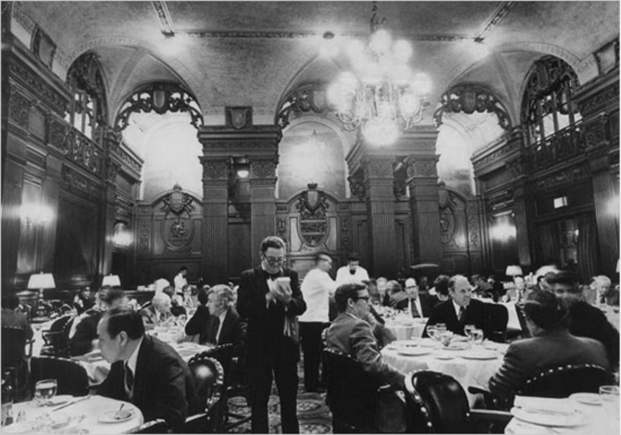Table of Content
These associations advocated against such changes to the park as the construction of a library, sports stadium, a cultural center, and an underground parking lot. The Central Park Association and the Parks and Playgrounds Association were merged into the Park Association of New York City two years later. Olmsted often clashed with the park commissioners, notably with Chief Commissioner Green. Olmsted resigned in June 1862, and Green was appointed to Olmsted's position. As superintendent of the park, Green accelerated construction, though having little experience in architecture.
According to American Community Survey five-year estimates, the park was home to four females with a median age of 19.8. Though the 2010 United States Census recorded 25 residents within the census tract, park officials have rejected the claim of anyone permanently living there. A high percentage of framed homes will be destroyed, with total roof failure and wall collapse. Well-built framed homes can sustain severe damage with loss of most of the roof structure and/or some exterior walls. Many shallowly rooted trees will be snapped or uprooted and block numerous roads. Near-total power loss is expected with outages that could last from several days to weeks.
Views
It measures 55 feet wide and 15 feet (4.6 m) tall with different east, west, and north faces. A single glacial pothole with yellow clay is near the southwest corner of the park. In 2014, the New York City Council proposed a study on the viability of banning vehicular traffic from the park's drives. The next year, mayor Bill de Blasio announced that West and East drives north of 72nd Street would be closed to vehicular traffic, because the city's data showed that closing the roads did not adversely impact traffic flows. Subsequently, in June 2018, the remaining drives south of 72nd Street were closed to vehicular traffic.

Central Park is patrolled by its own New York City Police Department precinct, the 22nd Precinct, at the 86th Street transverse. The 22nd Precinct has a lower crime rate than in the 1990s, with crimes across all categories having decreased by 81.2% between 1990 and 2019. The precinct saw one murder, one rape, 21 robberies, seven felony assaults, one burglary, 37 grand larcenies, and one grand larceny auto in 2019.
Los Angeles County Case Summary
Olmsted was responsible for the overall plan, while Vaux designed some of the finer details. Mould, who worked frequently with Vaux, designed the Central Park Esplanade and the Tavern on the Green building. Pilat was the park's chief landscape architect, whose primary responsibility was the importation and placement of plants within the park. A "corps" of construction engineers and foremen, managed by superintending engineer William H. Grant, were tasked with the measuring and constructing architectural features such as paths, roads, and buildings. Waring was one of the engineers working under Grant's leadership and was in charge of land drainage. In April 1858, the park commissioners selected Frederick Law Olmsted and Calvert Vaux's "Greensward Plan" as the winning design.

The park is adjacent to the neighborhoods of Harlem to the north, Midtown Manhattan to the south, the Upper West Side to the west, and the Upper East Side to the east. It measures 2.5 miles (4.0 km) from north to south and 0.5 miles (0.80 km) from west to east. The biologically diverse ecosystem has several hundred species of flora and fauna. Recreational activities include carriage-horse and bicycle tours, bicycling, sports facilities, and concerts and events such as Shakespeare in the Park. Central Park is traversed by a system of roads and walkways and is served by public transportation.
California’s only HBCU aims to solve Black doctor shortage
In 1857, landscape architects Frederick Law Olmsted and Calvert Vaux won a design competition for the park with their "Greensward Plan". Construction began the same year; existing structures, including a majority-Black settlement named Seneca Village, were seized through eminent domain and razed. Additional land at the northern end of Central Park was purchased in 1859, and the park was completed in 1876. After a period of decline in the early 20th century, New York City parks commissioner Robert Moses started a program to clean up Central Park in the 1930s.
The 66th Street transverse was the first to be finished, having opened in December 1859. The 79th Street transverse—which passed under Vista Rock, Central Park's second-highest point—was completed by a railroad contractor because of their experience in drilling through hard rock; it opened in December 1860. By the 1890s, maintenance had decreased to the point where the 86th Street transverse handled most crosstown traffic because the other transverse roads had been so poorly maintained. Both ends of the 79th Street transverse were widened in 1964 to accommodate increased traffic. Generally, the transverses were not maintained as frequently as the rest of the park, though being used more frequently than the park proper.
This list is intended to inform the public of the current COVID-19 community outbreaks in Los Angeles County. Inclusion on this list does not suggest neglect or wrongdoing on the part of the setting. The drive passes by the Central Park Zoo around 63rd Street and the Metropolitan Museum of Art from 80th to 84th Streets.
Experience the sloping hills and verdant green of North Carolina Central University. Discover special places on campus—including our classrooms, laboratories, residence halls and more. Our virtual tour is available 24 hours a day, seven days a week, and can be accessed from the comfort of your home. For women with spouses who have serious medical issues, access to paid family leave reduces the likelihood that they leave work, according to a new study. Republicans have made huge gains among Black and Latino voters since 2018 and 2020, leading to fear among Democrats that traditional political demographics are changing.
Duke Ellington Circle, at the northeastern corner, forms the junction between Fifth Avenue and Central Park North/110th Street. The square Grand Army Plaza is on the southeastern corner, at the junction with Fifth Avenue and 59th Street. Its largest feature is the Pulitzer Fountain, which was completed in 1916 along with the plaza itself. The plaza contains the William Tecumseh Sherman statue, dedicated in 1903.
One of the suggested modifications, underground irrigation pipes, were installed soon after Merkel's report was submitted. The other improvements outlined in the report, such as fences to mitigate plant destruction, were postponed due to the Great Depression. To preserve the park's character, the citywide Parks and Playground Association, and a consortium of multiple Central Park civic groups operating under the Parks Conservation Association, were formed in the 1900s and 1910s.















